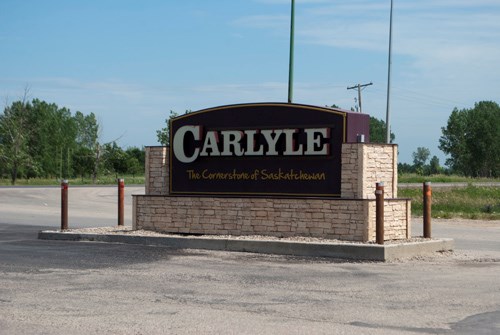Recently many business people in Carlyle have been shocked by their taxes, resulting in upset citizens. Though the province is asking for a large amount regarding school taxes many feel as though the municipal portion in the Town of Carlyle is too high.
"And, most relevant of all to economics, there is a tax system. Levy a high tax and your citizens will get irritated and want to move out. Levy a lower tax and you'll get lots of people moving in but you might not generate enough revenue to pay for [infrastructure]," Ed Conway explained in his online blog.
Though Conway was explaining how the game, Sim City, works he has essentially explained real life conundrums in operating a town or city. Sim City is a simulation game where "people" move in and out of your city based on opportunities, taxes, crime rate, and more. The player has omnipotent power as mayor to make decisions for the simulated town. One makes the decisions for their town based on cash flow and happiness of its citizens. Finding a balance in the game was many young people's first introduction to economics, while the current issues regarding municipal taxes in Carlyle are proving to have the same difficulties.
Though Carlyle has one of the lowest mill rates in the southeast, Carlyle's taxes are quite exorbitant based on the Saskatchewan Assessment Management Agency's (SAMA) assessed market value. This was determined through a valuation approach called a sales comparison approach. SAMA compares the sales price of similar properties, which is dependent upon Multiple Regression Analysis (MRA) techniques including lot size, building size, building quality and location, as well as other factors.
The province then multiplies this amount by percentages based on property classifications such as residential or commercial. This determines the total taxable property. From here SAMA takes a step back and it becomes the local municipal government's responsibility to determine the amount of municipal taxes they need to raise for the fiscal year. Therefore, through the use of the provincial government's tax tools local governments set mill rates and mill rate factors for their municipal taxes to be collected, while the provincial government sets a mill rate across Saskatchewan for education.
Thus, the total taxable assessed property is multiplied by a mill rate and a mill rate factor created by town council to establish what they need in their budget through taxes. The mill rate, set this year at 11.85 as opposed to 18.5 of last year, is a consistent number applied to all properties; while the mill rate factor, which has been set for commercial and industry at 1.3 for the past five years, allows calculations to alter the mill rate should be increased or decreased depending on the type of property.
A meeting on July 10 saw 11 business owners meet with town council to discuss possible changes to this year's taxes. Though it is too late for the town to ask SAMA to reassess Carlyle, the town did agree to look at its budget more closely and possibly alter the mill rate factor for commercial properties.
The town originally proposed to eliminate $245,000 out of the budget, but an emergency expense did come up with a price tag of approximately $60,000. The town is therefore willing to cut $185,000 from the budget and bring the mill rate factor to 1.1 instead of 1.3.
"Our goal is to grow the town," Mayor Don Shirley explained. "Communities get bigger and growth is expensive."
The business owners who were present considered this, but after a brief discussion amongst themselves suggested the town lower the mill rate factor to 1.0 giving business owners a 30 percent break which coincides approximately with the $185,000 the town is willing to cut from the budget according to business owners.
Mayor Shirley agreed to take it under consideration and town council would deliberate over the suggestion at the next town council meeting.
A concern both citizens and council members are hoping to look into is the percentage the province multiplied the assessments by. On average most areas in Saskatchewan were adjusted with 0.8, while Carlyle's was adjusted by 1.6. Overall this is explained through the strong market demand having caused property values to increase at a greater rate than the Saskatchewan average between 2006 and 2011.
This has therefore not only caused issues for people regarding their municipal taxes, but has also created a high demand from residents and business owners in Carlyle for school taxes resulting in irritated citizens.
Though this is an upsetting time for many, business owners and town council agree that working together would best benefit everyone involved. Together they could then move towards addressing tax tools, SAMA assessments, and school taxes at a higher governmental level to ensure this kind of an increase doesn't happen again.
While the dialogue concerning taxes is not over, the town has decided to extend their usual June discount of three percent until the end of July. This is only applicable to the municipal tax portion, not the school tax portion. People are therefore encouraged to go into the town office to pay as each person's taxes will differ accordingly.
In response to the self determined unfairness of the taxes this year the business owners are organizing into a Chamber of Commerce. This will allow businesses in town to express their concerns effectively not only to the Town of Carlyle, but to the province as well.




